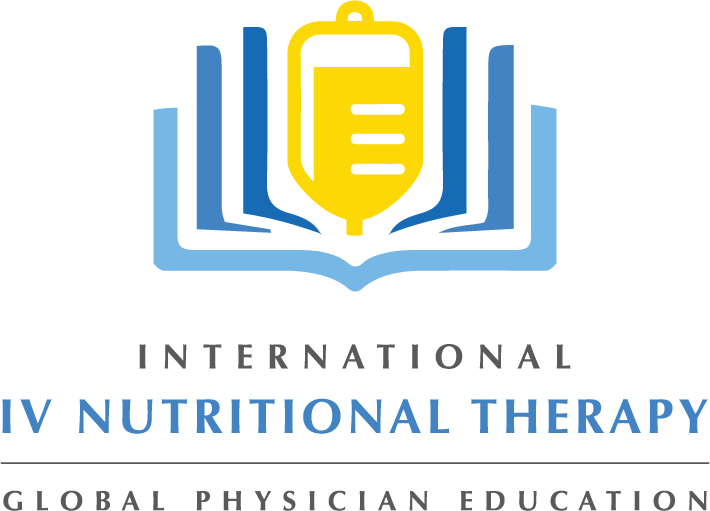Introduction
Treatment and improvement of CVD signs, symptoms and blood parameters is multifactorial, including diet, pharmaceuticals (not covered in this article), IV and oral nutrient therapy, exercise and lifestyle. The “ sound bite” version of treatment would look like this: Most of the references will be included in our soon-to-be-published book.
Diet
Low carbohydrate, moderate protein (Clifton)(Layman), moderate good fat, whole food diet. Eliminate sugar and all foods with flour. Eliminate wheat; even if a person does not have Celiac disease, wheat often causes an innate immune response leading to gut inflammation. High carbohydrate diets are not heart healthy or beneficial to body composition. (Lasker) Moderate protein is 0.5-0.75 grams protein per pound body weight. More physical activity requires greater amounts of protein; most people are good at 0.5 grams/pound, a very active person may do better at 0.75 grams/pound. For example, a person weighing 150 pounds would require 75-113 grams protein daily (2.7 to 4 ounces protein). The RDA for protein is 0.36 grams/pound which may keep most people out of protein malnutrition, but it is not sufficient for optimal health. Meat is about 20% protein so if you are getting all your protein from meat you would need to eat about 13-20 ounces meat daily. Eggs are another good protein source. One egg provides 6.3 grams good protein or 0.2 ounces, so 2 eggs would provide about ½ ounce protein. Good sources of protein are wild game, grass fed beef, buffalo and lamb, free range chicken. Alaska salmon is good and generally free of mercury contamination. Use healthy fat (wild or pastured animal fat, butter, coconut oil, olive oil is fine to add after cooking. Eliminate grain and seed derived oils; these oils have excess omega-6 fats that contribute to inflammation. Eat low glycemic vegetables ad libitum; consume about 400 carbohydrate calories (100 grams) from non-toxic sources, these include white rice, sweet potatoes, yams and white potatoes. If visceral fat is an issue stick with vegetables and avoid the non-toxic carbohydrates until body weight normalizes.
IV Nutrient Therapy
Magnesium
IV magnesium is used successfully to prevent/convert atrial fibrillation during coronary artery bypass graft procedures. Although there was no significant difference betweengroups with respect to episodes of ventricular arrhythmias, there was asignificant decrease in the number of episodes of atrial fibrillation inthe group receiving magnesium therapy (p less than 0.02).(2) Hypomagnesemia, probably related to increased urine magnesium excretion, is an essential feature of heart failure associated with ventricular arrhythmias. IV administration of magnesium (magnesium sulfate 8 g in 250 mL of 5% glucose) over 12 hours alleviated or prevented the arrhythmias. If a patient has had recent surgery, and has impaired platelet function and co-existing bleeding disorders, large-dose IV magnesium therapy should be carefully considered, as it can inhibit platelet function in vitro and in vivo. Serum Mg < or = 1.95 mg/dL was found to be a risk factor for sudden death and for death from progressive pump failure in congestive heart failure.
There are studies showing that IV Mg can move from the vascular space (blood) to the ECF and cells over 48 hours after administration. When giving IV Mg on consecutive days lower the dose or add calcium to moderate the Mg effect; not doing so risks speed shock with typically safe doses of Mg.
Potassium (K)
IV K is administered to provide solution balance and minimal replacement. Potassium repletion for hypokalemic patients requires laboratory services (to measure electrolyte levels) and patient monitoring equipment including ECG. K infusion rates should not exceed 10 mEq/h. K is never given in an IV push.
Taurine
Taurine is a sulfur containing organic acid that is present in all cell membranes and plays a major role in the normal functioning of electrically excitable tissues. Taurine is effective for arrhythmia, cardiomyopathy, congestive heart failure, mitral valve prolapse, and cholesterol reduction. Taurine is essential to synthesize taurocholic acid, a bile salt that binds cholesterol in the gut. Taurine suppresses renin helping to break the renin-angiotensin feedback loop; this leads to lower blood pressure. Magnesium and taurine are highly complementary.
Arginine
Interest in arginine for cardiovascular disease centers on its role as a precursor to the neurotransmitter nitric oxide (NO). In fact, arginine is the sole nitrogen source for nitric oxide (NO) synthesis. NO is the lightest and smallest molecule and it helps to regulate the dilation and constriction of small blood vessels. NO synthase is inhibited by many of the toxic metals.
Carnitine
Carnitine and Taurine are both essential for cardiovascular health, and especially for vegetarians, as meat is the main food source for both nutrients. Carnitine is concentrated in the heart more than in any other organ. Carnitine has the ability to increase fat oxidation; the heart utilizes fat oxidation extensively for energy production. Carnitine is also useful to lower triglycerides. Carnitine is an important conditionally essential nutrient for the heart. Both carnitine and taurine are synthesized, not derived from animal sources, so are suitable for vegans.
Proline
Proline is very important for collagen production and reducing the loss of collagen during the aging process. It helps maintain and strengthen the heart muscle. Proline is contraindicated in depression or seizures. Linus Pauling suggested that a mixture of vitamin C, lysine and proline could prevent or treat CVD.
Phosphatidylcholine (PC)
PC is the most abundant phospholipid in animal and plants, often amounting to almost 50% of the total, and is the main structural component of cell membrane bilayers. It makes up a very high proportion of the outer leaflet of the membrane. PC is also the principal phospholipid circulating in plasma, where it is an integral component of lipoproteins, especially HDL. Most studies on PC have focused on its healing effect on the liver, where it restores biological function in conditions such as cirrhosis. Its use in CVD centers on its possible effect of raising HDL cholesterol.
PC infusions can be alternated with chelating agents such as EDTA; the most beneficial treatment ratio has not been studied. A Russion study showed that lipostabil forte (oral PC product) improved the functional activity of high-density lipoproteins in reverse cholesterol transport. (Ozerova) PC has also been shown to improve the removal of cholesterol from vascular plaques. (Chung)
Selected complementary oral treatments
Niacin
Niacin is currently the most effective drug for lowering LDL-C and raising HDL-C. Niacin appears to have a beneficial effect on LDL-P. (Haseeb) Sustained release niacin taken at bedtime decreases adverse effects that may occur with daytime dosing. Starting dose is 500 mg and the dose is incremented over 6 weeks to a total dose of 1500 mg. Some patients may require dosing as high as 3000 mg. Follow liver function tests monthly during initial dosing period and lipid panels every 3-6 months.
Vitamin D
Low 25-hydroxyvitamin D levels have been associated with the cardiovascular disease risk factors of hypertension, obesity, diabetes mellitus and the metabolic syndrome, as well as cardiovascular disease events including stroke and congestive heart failure. (Michos) (Wang)
Despite substantial clinical evidence linking vitamin D deficiency with increased cardiovascular risk, it remains to be established whether this represents a causal association. Further study is needed with prospective, randomized controlled trials before vitamin D supplementation can be routinely recommended for the primary or secondary prevention of cardiovascular disease. (Pipe) Conservative save doses of vitamin D3 are in the 2000 IU range for adults. Measure vitamin D levels (25-OH vitamin D) every six months; most clinical studies in a variety of health areas point toward a blood level of vitamin D that is between 90 to 100 nmol/L, or 35 to 40 ng/mL, for preventive health. (Moyad) Physicians acquainted with nutrition will generally recommend repletion sufficient to obtain 25-OH vitamin D blood levels of 50-80 ng/mL.
Co-Enzyme Q10
Co-enzyme Q10, 120 mg daily. Q-gel is a quality brand that is well absorbed. Many cheap CoQ10 supplements do not absorb into the bloodstream well.
Research has shown that orally administered CoQl0 can improve functioning of myocardial tissue, strengthening the heart’s contractions and making it beat more strongly (positive inotropic effect) and more regularly (anti-arrhythmia effect). CoQ10 also acts as an antioxidant to control free radicals produced during cardiac interventions (including angioplasty, thrombolysis, and surgery).
Accordingly CoQl0 has been used in the treatment of different heart disorders that include arrhythmias related to primary cardiomyopathies or secondary forms of heart failure. A 1998 study observed patients with acute myocardial infarction. For 28 days one group received 120 mg of CoQ10 and the other group received a placebo. After treatment, total arrhythmias were 9.5% in the CoQ10 group compared to 25.3% in the placebo group. CoQ10 produced a significant reduction in angina pectoris and left ventricular dysfunction. Non-fatal infarction and cardiac deaths also were significantly lower in the CoQ10 group. This shows that CoQ10 helps prevent potentially life-threatening dysrhythmias during the immediate period following a myocardial infarction. This is the period of time when arrhythmia has the greatest likelihood of causing death.
Fish oil
One of the triggers for the formation of atherosclerotic plaques in arteries is inflammation, and a significant contributor the inflammation is the relative excess of omega-6 oils in the diets of most people. An ideal omega-6:omega-3 ratio has been postulated to be in the range of 1:1 to 4:1; the ratio of many Americans has been estimated to be as high as 25:1 and this will definitely contribute to a pro-inflammatory state. Patients should be advised to avoid the commercial seed oils including safflower, soy, corn, Canola and peanut. Fish oil must be fresh and unoxidized; rancid oil does more damage than benefit. An average dose is 5 mL daily.
References:
Clifton PM, et al. High protein diets decrease total and abdominal fat and improve CVD risk profile in overweight and obese men and women with elevated triacylglycerol. Nutr Metab Cardiovasc Dis. 2009 Oct;19(8):548-54.
Donald K. Layman, et. al. A Moderate-Protein Diet Produces Sustained Weight Loss and Long-Term Changes in Body Composition and Blood Lipids in Obese Adults. Journal of Nutrition, vol. 139, No. 3, 514-521, March 2009.
Denise A Walker Lasker, Ellen M Evans, and Donald K Layman. Moderate carbohydrate, moderate protein weight loss diet reduces cardiovascular disease risk compared to high carbohydrate, low protein diet in obese adults: A randomized clinical trial Nutr Metab (Lond). 2008; 5: 30.
N.Ozerova, N.M.Akhmedzhanov, N.V.Perova and I.V.Paramonova. Simvastatin and Preparation of Polyunsaturated Phospholipids Produce Similar Changes in the Phospholipid Composition of High-Density Lipoproteins during Hypercholesterolemia . Bulletin of Experimental Biology and Medicine, Vol 139, No. 2, February 2005; 210-212.
Chung, BH, et al. Phosphatidylcholine-rich acceptors, but not native HDL or its apolipoproteins, mobilize cholesterol from cholesterol-rich insoluble components of human atherosclerotic plaques. Biochim Biophys Acta. 2005 Mar 21;1733(1):76-89.
Haseeb Jafri, Richard H Karas, Jeffrey T Kuvin. Effects of Niacin on LDL Particle Number: Niacin & LDL-P. Clin Lipidology. 2009;4(5):565-571
Michos ED, Melamed ML. Vitamin D and cardiovascular disease risk. (Curr Opin Clin Nutr Metab Care. 2008 Jan;11(1):7-12.
Wang TJ et al. Vitamin D Deficiency and Risk of Cardiovascular Disease. Circulation. 2008;117:000-000.)
Edited by Andrew Pipe. Vitamin D and cardiovascular disease risk: emerging evidence. Current Opinion in Cardiology: September 2010 – Volume 25 – Issue 5 – p 513–517.
Moyad MA. Vitamin D: A Rapid Review. Dermatology Nursing. 2009;21(1).


 Fundamentals and Clinical Application of IV Nutrient Therapy
Fundamentals and Clinical Application of IV Nutrient Therapy